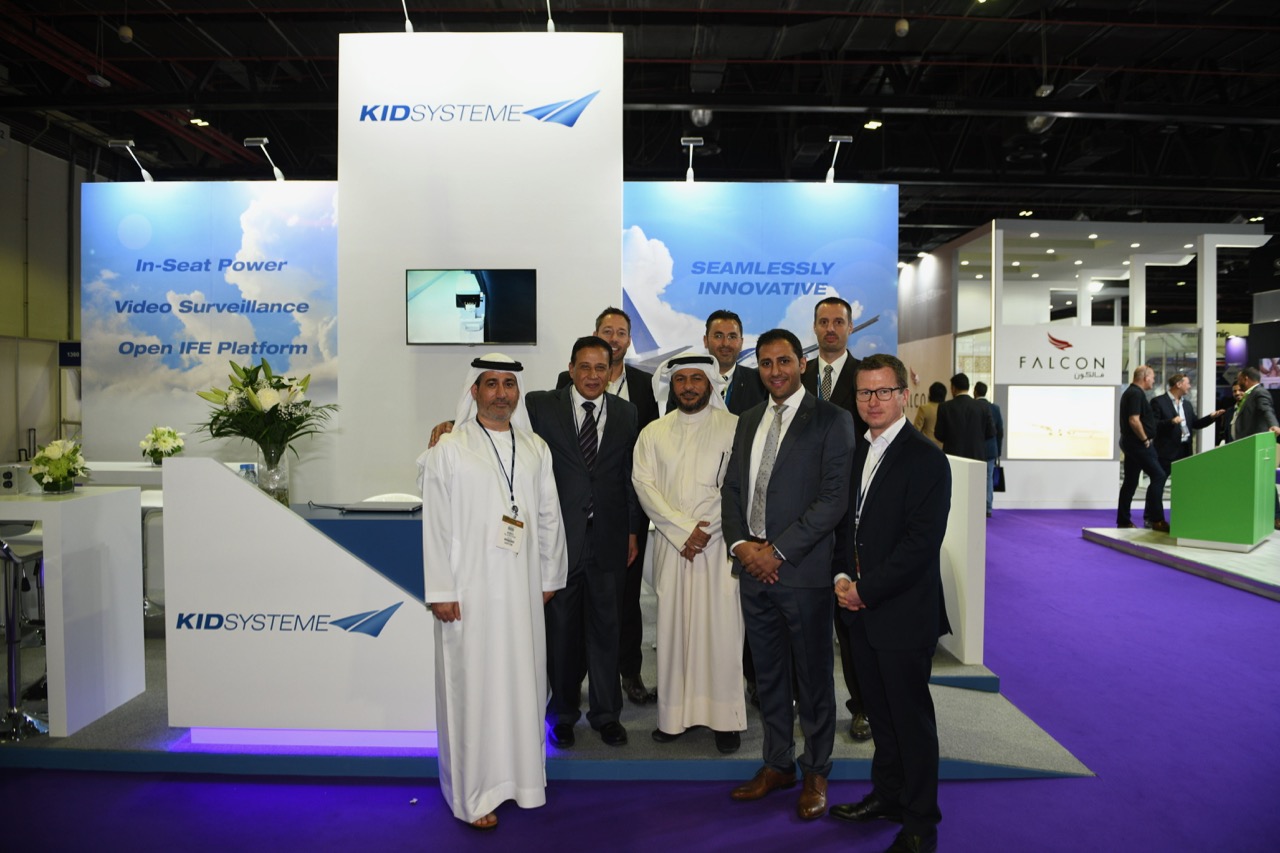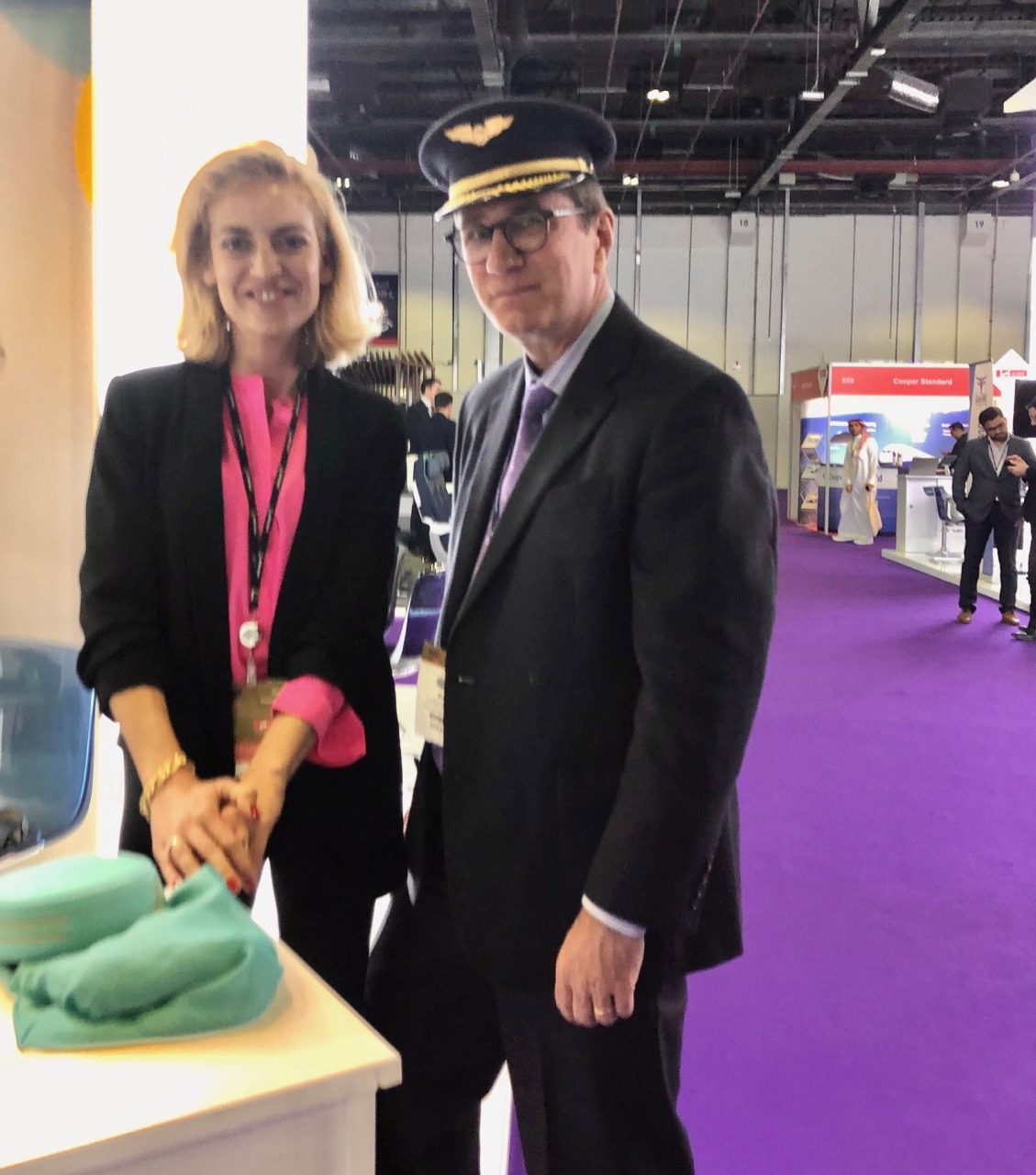Eye on IFEC at AIME

KID-Systeme is one of the companies that has committed to next year’s AIME. The company’s Managing Director, Peter Schetschine, was a panelist for the opening day discussions
DUBAI — If there was doubt in anyone’s mind about the importance of inflight entertainment and connectivity in the future of air travel and the passenger experience, the discussions at this year’s Aircraft Interiors Middle East and Middle East MRO events from February 25 to 26 would put any of that skepticism to an end.
Speakers detailed plans of major technology and satellite investment, and touted the importance of emerging cellular capability as a way for airlines to save and earn money, all in the billions of dollars, in years to come. Outside the sessions, hundreds of companies sought to use their expertise to fill the ever-increasing demand for maintenance and overhaul in a region that will have its fair share of aircraft deliveries and airline growth in the next several years.
Two days of networking and seminars, that ended February 26, that brought in more than 5,000 visitors to two large halls that held 330 exhibitors. The stands bustled with activities throughout the two days. In the late-morning and early-afternoon IFEC Seminar sessions, panelists and presenters laid out a future of increased satellite and 4G and 5G connectivity designed to enhance passenger experience and provide a source of revenue for the airlines.
“The event has yet again attracted some of the industry’s most exciting innovations,” says Caryn McConnachie, Aerospace Director at Tarsus F&E LLC, Middle East show organizers. “We are proud to have been able to bring together the industry’s key innovators with its airline customers in a dedicated event, providing the ideal platform for business.”

PAX Tech Editor-in-Chief Rick Lundstrom moderated the IFEC Seminar. The opening day of sessions first brought together two engineers, Zak Liyaqat-Ali, Senior Manager of Components at South African Airways, and Rana Kashif Altaf, Senior Fleet Manager of Engineering and Technical Services at Emirates. Liyaqat-Ali took visitors through the airline’s passenger tracking system that monitors people from check-in to aircraft using radio frequency TETRA technology. Altaf led numerous technical projects and retrofits on Emirates’ fleet including the airlines ice inflight entertainment system, cabin connectivity, live TV and cabin video monitoring.
On both days, SITAONAIR’s Product Development Manager Philippe Combe made the case for the potential of inflight cellular 4G and 5G connectivity as a way for airlines to provide both a superior and flexible inflight connectivity experience as well as a revenue stream. By 2023, Combe said estimates show that there will be one billion devices produced that can accommodate 5G capability. To efficiently obtain the ancillary revenue available, he said airlines can work with some of the 800 mobile communications companies to bundle roaming packages that passengers can use throughout their trip.
“Passengers are willing to pay for the right user experience,” Combe told the group.
Neale Faulkner, Regional Vice President for Inmarsat, dwelled on the future of inflight connectivity for a generation of Millennial and Generation Z travelers that are now becoming regular flyers. Younger travelers have grown up expecting Internet to be readily available from any location and for airlines to retain a group that ignores such perks as frequent flyer memberships, a reliable Internet connection is vital to retaining their loyalty, he said.
The first day of the IFEC Seminar ended with a panel discussion featuring Philippe Combe from SITAONAIR, Alya Al Qalam Al Yafie, Manager Development Engineer IFEC at Oman Air, Peter Schetschine, Managing Director of KID-Systeme, and Rahul Behal, Marketing Development Manager MEASA at Inmarsat. In a wide-ranging session, panelists talked about the importance of communication between airlines and technology providers and their goals of enhancing passenger experience. They also touched on the ways that airlines could better meet the needs of families and young travelers.
Day two discussions brought back several panelists. Zak Liyaqat-Ali, a veteran of South African Airways, took the group through the decades-long history of the legacy airline from the early 90s’ when it was a pioneer in inflight entertainment and cabin service through the early 2000s when it had a comprehensive restructuring program which aimed to make the airline profitable.
South African Airways is still implementing measures to return to profitability. These include targeted changes to the route network, deployment of more fuel-efficient aircraft, optimization of organizational structures and renegotiation of key contracts with suppliers. It has also acquired more fuel efficient A350s for its long-haul network.

Tina Ghataore, Executive Vice President – Inflight Connectivity Solutions at Yahsat in Abu Dhabi, talked about the company’s satellite services and gave advice to airlines seeking to implement broadband Internet on their aircraft
Steney Johns, Technical Manager for Inmarsat Aviation gave a detailed anaylsis. To establish global coverage of its satellite network, Inmarsat will be launching a group of three satellites in the near future. The company’s GX 7, 8, and 9 satellites will deliver approximately twice the total capacity of the entire current GX network. The company is also planning ahead for ultra-long-range flights by working to provide inflight connectivity over the North and South Polar regions where many of the flights will go. Software improvements and more maneuverable satellites will also be necessary to cover the burgeoning air traffic in several important regions, Johns said.
The IFEC Seminar sessions rounded out with Tina Ghataore, Executive Vice President of Inflight Connectivity Solutions at Yahsat in Abu Dhabi. The company has a constellation that covers 55 countries in the Middle East region, providing inflight and ground Internet to the Middle East and Africa. The company is seeking out airlines in the region. Many of the region’s low-cost carriers would benefit greatly by offering passengers the service, she said.
Yahsat took the first steps to offering inflight Internet two years ago through a partnership between Yahsat, Etihad Airways Engineering, Hughes Network System, and Carlisle Interconnect. As part of the partnership, Yahsat successfully tested and has implemented 50 megabits per second Internet connection.
AIME and MRO Middle East will return to Dubai World Trade Centre March 2 to 3, 2021.

